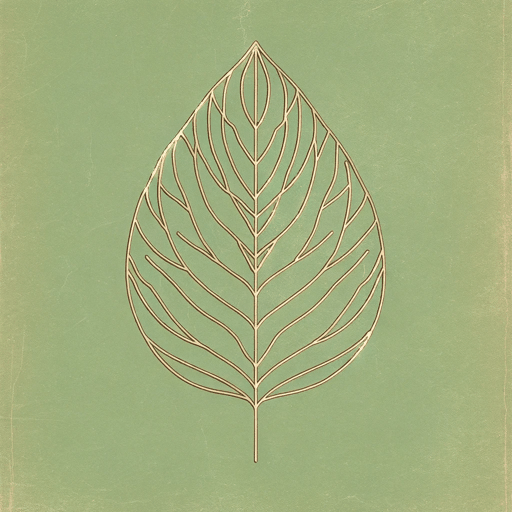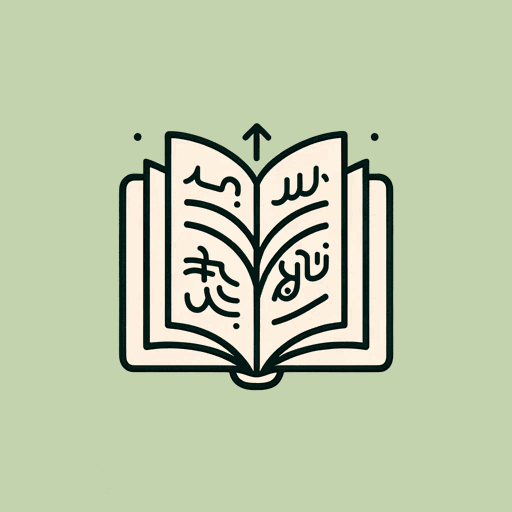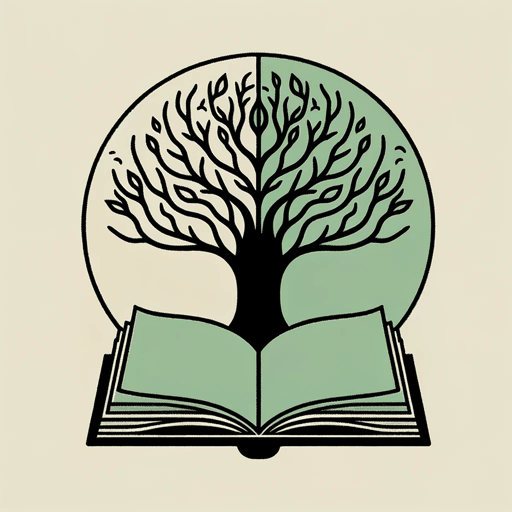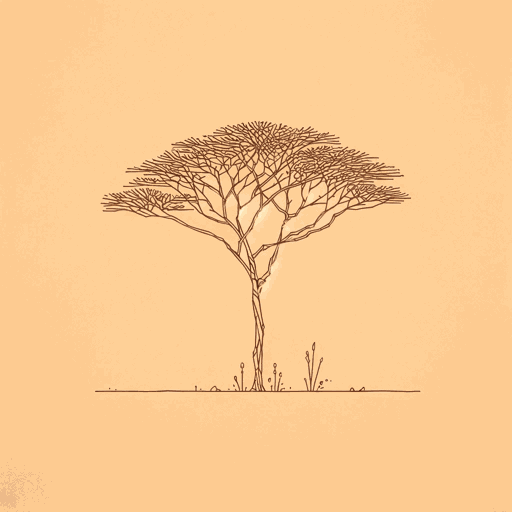60 pages • 2 hours read
Ngũgĩ wa Thiong'oThe River Between
Fiction | Novel | Adult | Published in 1965A modern alternative to SparkNotes and CliffsNotes, SuperSummary offers high-quality Study Guides with detailed chapter summaries and analysis of major themes, characters, and more.
Summary and Study Guide
Overview
The River Between is Kenyan author Ngugi wa Thiong’o’s second novel and was published in 1965 after his debut title, Weep Not, Child. While The River Between is widely interpreted as an anticolonial work, its denouncement of colonial institutions is subtler than that of Ngugi’s later, more critical works on colonialism. His later novels were originally written in the Gikuyu language rather than in English; discourse surrounding the modern-day role of African literature is ongoing, with some critics stating that any African work written in English remains a byproduct of English or European literature. Gradually, Ngugi embraced this line of thinking, and he wrote his first full work in Gikuyu on a roll of toilet paper while incarcerated in a Kenyan prison. The River Between is still lauded for its depictions of precolonial Gikuyu life as well as its analysis of the effects of Christianity’s arrival on local inter-community relations, practices, and beliefs.
This study guide refers to the Penguin Classics text, which was published in 1965 and includes an introduction by Uzodinma Iweala.
Content Warning: Both the source text and this guide contain descriptions of male and female genital mutilation, as well as themes of colonialism, racism, and cultural disintegration.
Plot Summary
The villages of Kameno and Makuyu are located among the geographically isolated Gikuyu ridges of rural Kenya and are divided by the river Honia. While both villages share a common history and culture and rely on the river for nourishment, their relationship is primarily competitive and antagonistic. Neither village has come into contact with foreigners from other African communities or from Europe, but this will soon change with the arrival of European colonial groups, specifically white Christian settlers.
A respected elder of Kameno, Chege, has warned the villages of the arrival of the white settlers, but the people do not heed his warning, convinced that the white people pose no threat since they do not speak the language of the land. Chege believes that his son Waiyaki will be the prophetic savior of the Gikuyu tribes. When Waiyaki reaches the beginning stages of adolescence, Chege informs him of the prophecy. Although young, Waiyaki naturally commands attention and loyalty from his friends and from the adults in the village. Throughout the novel, he is uncertain of his role as a savior, but he feels committed to upholding the prophecy’s message and the tribe’s survival. To fulfill the prophecy, Chege sends Waiyaki to Siriana, a Mission town in which Waiyaki attends a European-run school and becomes educated in the ways of the white people alongside his friends, Kinuthia and Kamau.
In Makuyu, a Gikuyu man named Joshua has converted to Christianity and become a renowned preacher. He lives with his wife and two daughters, Nyambura and Muthoni. While both of his daughters are practicing Christians, neither is fully satisfied with the foreign religion. Muthoni believes that she can supplement her Christian beliefs with traditional Gikuyu customs, specifically the ritual of female circumcision. She believes that this ritual will transform her into a “real woman.” Although Joshua is staunchly against the Gikuyu ritual, which white Christians view as a terrible sin, Muthoni undergoes the circumcision alongside other Gikuyu boys and girls, including Waiyaki. While Waiyaki feels distant from his culture’s rituals and traditions because he has been receiving schooling in the missionaries’ town of Siriana for many years, he is able to embrace and appreciate the circumcision ritual mostly due to Muthoni, whose striking presence brings him back into his body, both literally and culturally. As Waiyaki heals, Muthoni suffers from an infection at the surgical site. Informing Nyambura of her worsening state, Waiyaki takes Muthoni to a hospital in Siriana, where she eventually dies.
Muthoni’s death exacerbates the divide between the traditionally oriented village of Kameno and the increasingly Christian Makuyu. Kabonyi, Joshua’s convert and helper, denounces the Christian religion, gathering discontented people to form a political group called the Kiama. Meanwhile, the mission school in Siriana forbids any circumcised children from returning to school, including Waiyaki. People across the area become more concerned about the growing influence of the white foreigners, particularly as white men begin claiming parcels of land and mandating a tax for the upkeep of colonial institutions. In response, people cling to the idea of Gikuyu tribal purity and regret that they did not heed Chege’s warning.
Waiyaki, dismayed by his inability to finish his education in Siriana, starts his own independent Gikuyu school with Kamau and Kinuthia, modeling it after the Mission school. Waiyaki becomes convinced that spreading education across the ridges is the antidote to colonial forces; he believes that this approach will assist his people’s self-determination and actualization. While Kabonyi and the Kiama are more concerned with political grievances such as the land grabs, Waiyaki insists that the white people’s version of education is the only tool necessary to effect Gikuyu liberation. Many people across the ridges are drawn to Waiyaki’s conviction and intelligence, and although they are unaware of the prophecy, they call him the “Teacher” and cast him in the role of a leader.
Waiyaki’s growing popularity stokes the jealousy of the elder Kabonyi and his son Kamau. Kabonyi invites Waiyaki to be part of the Kiama, ensuring that Waiyaki takes an oath to protect Gikuyu purity and the tribal way of life. The Kiama stands firmly against Joshua and the other Christian converts, and they believe that embracing education is not enough to address the white settlers’ sinister influence.
Amidst this political and cultural turmoil, Waiyaki and Nyambura fall in love. Their love is forbidden because Waiyaki is tasked with protecting the purity of the tribe, and Nyambura is considered impure because she is a Christian and has not been circumcised. Kabonyi and Kamau become aware of Waiyaki’s affection for Nyambura, and they use this fact to turn people against Waiyaki, claiming that he has betrayed the tribe. Waiyaki attempts to stress the need for unity and education in the face of tribal dissolution at the hands of the Europeans, but the people ultimately refuse to embrace him as their leader because he does not renounce his love for Nyambura. The villagers rally around Kabonyi and Kiama, allowing the political group to decide Waiyaki and Nyambura’s fate. The hills, once awakened by Waiyaki’s education, return to metaphorical slumber and are now covered in darkness. The river Honia flows on, undeterred or untouched by man’s interpersonal chasms of conflict.
Related Titles
By Ngũgĩ wa Thiong'o

A Grain of Wheat
Ngũgĩ wa Thiong'o

A Meeting In The Dark
Ngũgĩ wa Thiong'o

Decolonising the Mind: the Politics of Language in African Literature
Ngũgĩ wa Thiong'o

Devil on the Cross
Ngũgĩ wa Thiong'o

Dreams in a Time of War
Ngũgĩ wa Thiong'o

I Will Marry When I Want
Ngũgĩ wa Thiong'o

Matigari
Ngũgĩ wa Thiong'o

Petals of Blood
Ngũgĩ wa Thiong'o

Weep Not, Child
Ngũgĩ wa Thiong'o

Wizard of the Crow
Ngũgĩ wa Thiong'o

